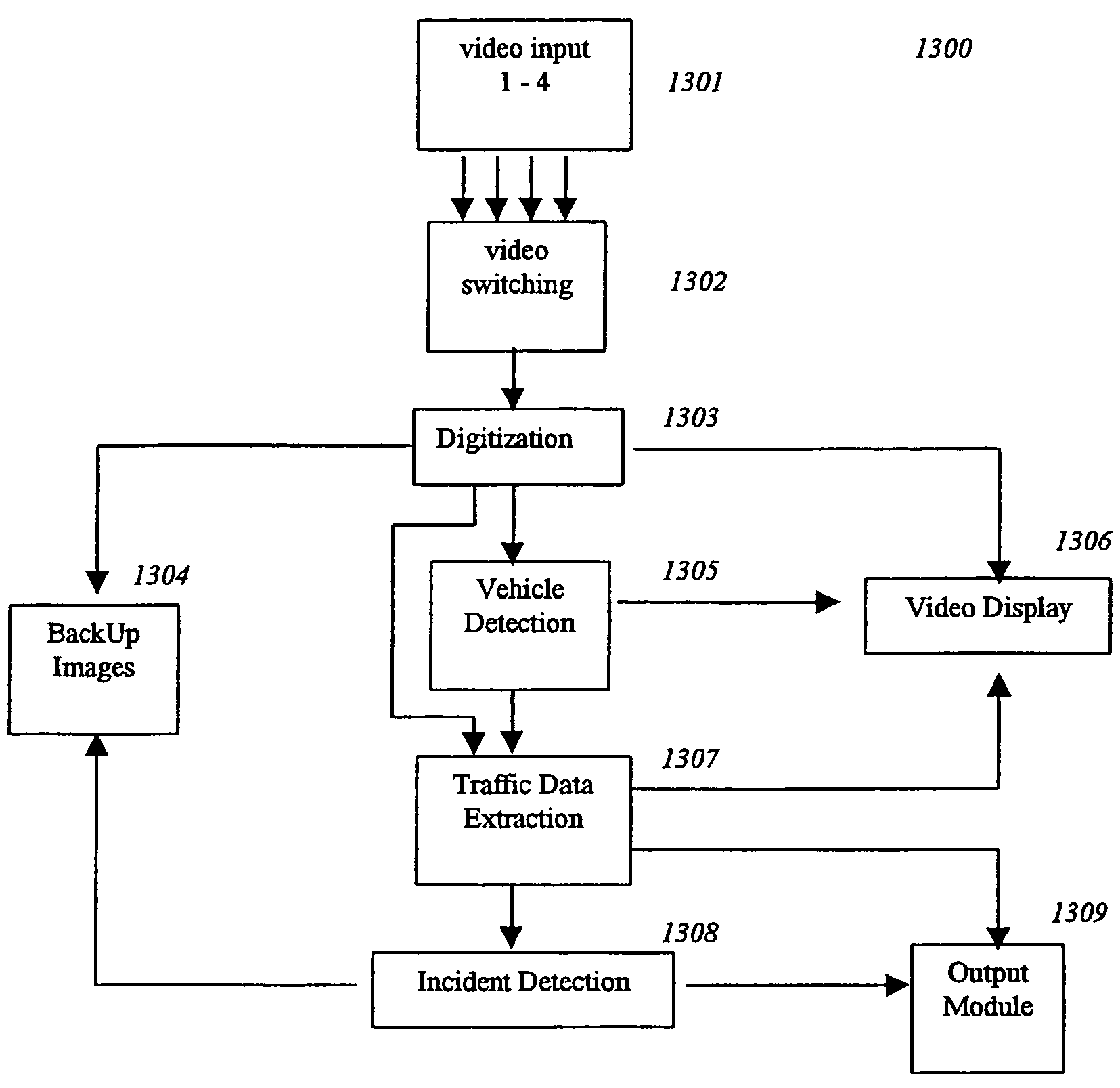Image processing techniques for a video based traffic monitoring system and methods therefor
a traffic monitoring and image processing technology, applied in television systems, instruments, analogue processes for specific applications, etc., can solve problems such as false detection on affected lane, system “false trigger, and difficulty in obtaining an updated background image, so as to reduce the noise of the system, reduce the probability of false detection due to headlight reflection, and reduce the effect of nois
- Summary
- Abstract
- Description
- Claims
- Application Information
AI Technical Summary
Benefits of technology
Problems solved by technology
Method used
Image
Examples
Embodiment Construction
[0090]The following detailed description describes the invention, which is particularly well suited for traffic data extraction using video images under dynamic ambient lighting conditions. The description will be divided into three sections. First, the overall system architecture, as well as the flow of the image processing process, of the invention will be described. In the second section, the vehicle detection process of the invention will be described in further detailed. The traffic parameter extraction process will be described in the third section.
5.1 Overall System Architecture
[0091]FIG. 13 shows the schematic block diagram of the image processing process 1300 for the traffic monitoring system. The system is capable of processing upto four video inputs, hence providing simultaneous monitoring of four traffic sites. Video switching module 1302 is responsible to multiplex between four video inputs. During the digitization process 1303, the video signal will be digitized for su...
PUM
 Login to View More
Login to View More Abstract
Description
Claims
Application Information
 Login to View More
Login to View More - R&D
- Intellectual Property
- Life Sciences
- Materials
- Tech Scout
- Unparalleled Data Quality
- Higher Quality Content
- 60% Fewer Hallucinations
Browse by: Latest US Patents, China's latest patents, Technical Efficacy Thesaurus, Application Domain, Technology Topic, Popular Technical Reports.
© 2025 PatSnap. All rights reserved.Legal|Privacy policy|Modern Slavery Act Transparency Statement|Sitemap|About US| Contact US: help@patsnap.com



